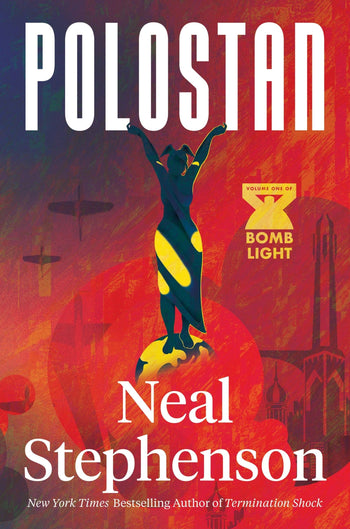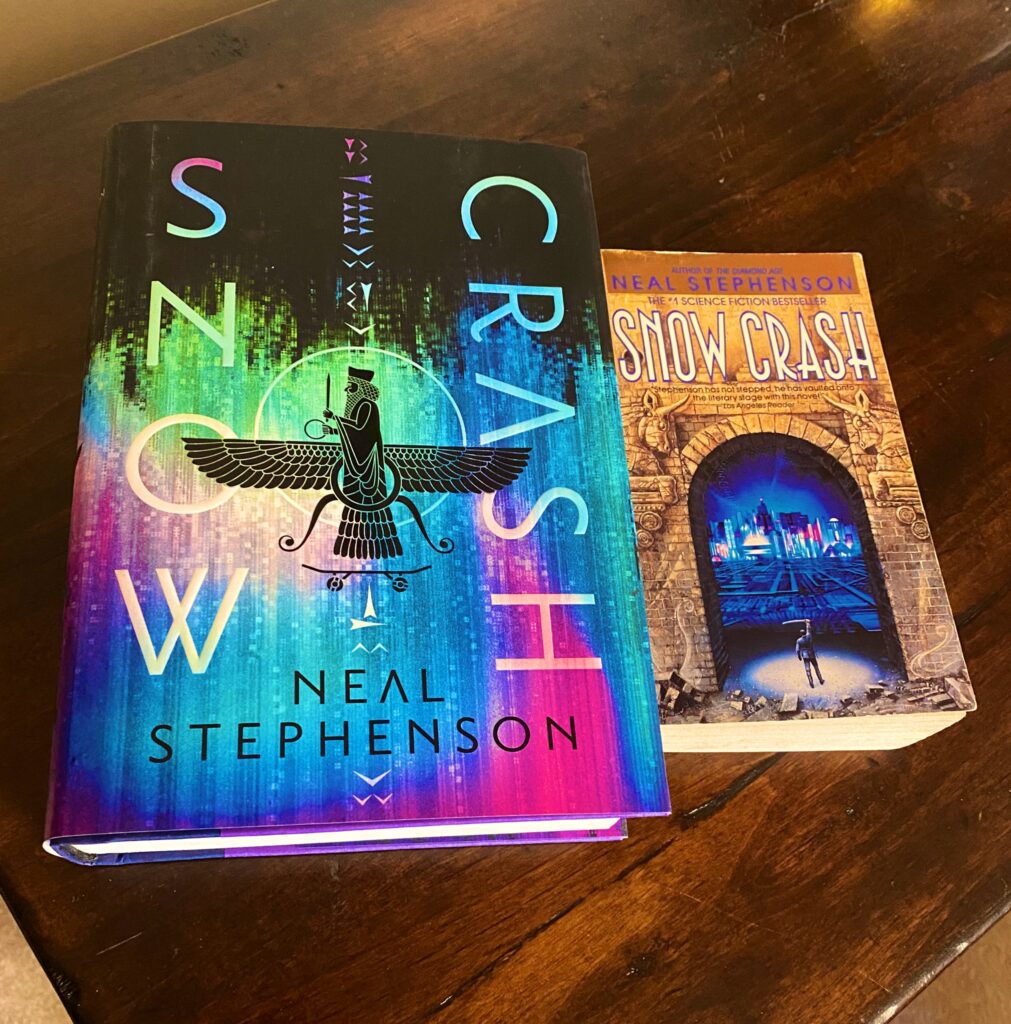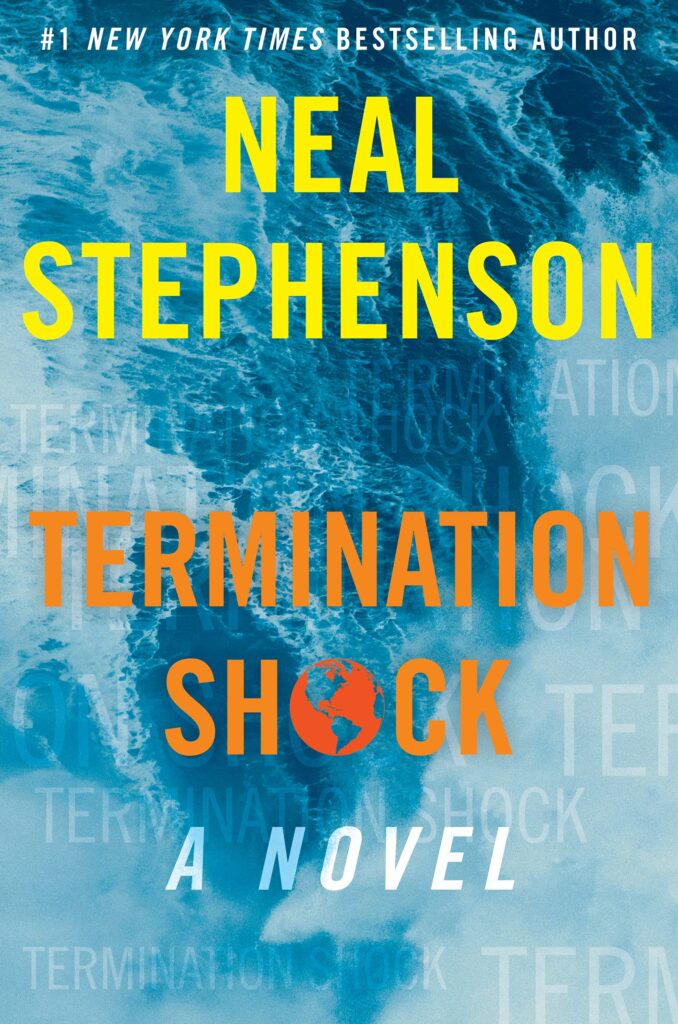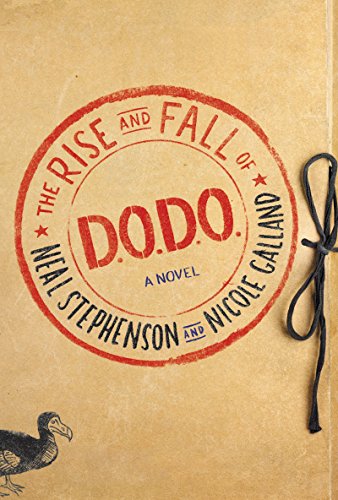When I was a teenager, I once picked up a copy of Paradise Lost and immediately bounced right the hell off of it. Something about the blank verse or Milton’s particular style was just impenetrable to me. As Samuel Johnson once quipped: “Paradise Lost is a book that, once put down, is very hard to pick up again.” And lo, I did not pick it back up again. As such, when news of Neal Stephenson’s new novel, Fall; or, Dodge in Hell, pitched the story as “a high-tech retelling of PARADISE LOST featuring some characters from REAMDE” or “Paradise Lost by way of Phillip K. Dick”, I was a little apprehensive. Was my hesitation warranted? Maybe! Despite some serious gripes, I ultimately enjoyed the book.
As Fall starts, we center on the titular Richard “Dodge” Forthrast (a character from Stephenson’s earlier thriller, Reamde, though Fall could easily be read as a standalone) as he goes about a routine day leading up to a minor medical procedure… that results in his death. Spoilers, I guess, but this is at the start of the book. As it turns out, when video-game magnate Dodge came into money a while back, he signed a will dictating that his body be frozen after death, with the assumption that future technologies would be able to revive him. As his niece Zula and friend Corvallis (both also from Reamde) parse through the will and manage the estate, they come to the conclusion that the state of the art is not to freeze the meat, but to preserve the brain’s connectome. Eventually, this leads to a high resolution scan of Dodge’s brain, which is then uploaded into a computer, wherein it becomes aware and starts doing… stuff. The process is not perfect, and thus things like memory and identity aren’t fully resolved in the uploaded system, but the disembodied mind of Dodge, seeking qualia, is able to construct a body for himself as well as a virtual landform to exist upon. As time goes on, more brains are uploaded and must coexist. Naturally, some conflicts break out in the uploaded bitworld, and hijinks ensue.
The book is essentially told in two parts. First is the real world, where Zula and a cast of familiar characters from Reamde as well as other Stephenson works (including the Waterhouse clan and Enoch Root from Cryptonomicon and The Baroque Cycle) deal with the legal implications of Dodge’s death and complicated estate (he’s obscenely wealthy, so there’s a lot to do there) over the course of decades. Second is in the bitworld, which eventually evolves into a sorta Biblical-flavored high fantasy story. The novel starts in the real world, then starts to interleave chapters in the bitworld, which eventually takes over the narrative completely until a brief interlude in the real world at the end.
The real world portions of the novel are fantastic. Stephenson’s usual digressions are present in full force here, but are as cogent and relevant as ever. Which, naturally, means that some of them maybe feel misplaced or extraneous, but are interesting in their own right (for example, the opening of the book is likely to garner some side-eye, as it features Dodge ruminating about lots of seemingly irrelevant topics like alarm clocks and soap bubbles and whatnot). The initial explorations of the will’s legal implications and the notion of preservation moving from meat to connectome is handled in detail, but with Stephenson’s usual wit.
As the story progresses, we get some jumps in time which allow Stephenson to extrapolate on some of our current day woes. For instance, relatively early on, there’s an elaborate hoax that spreads like wildfire on the internet, despite being rather quickly debunked. The whole event is eye opening and tense; Stephenson captures the unfolding drama and the way in which it’s received perfectly. The notion of people creating neat little echo chambers for themselves on the internet has always been a concern, but the rise of social media seems to have accelerated some of the complications, and Stephenson does a great job encapsulating the problem and hypothesize the consequences. Some of this might veer too far into hyperbole (the short trip into Ameristan is a good example of that – entertaining and interesting for sure, but a little strained in terms of plausibility), but other aspects are absolutely dead-on. The notion that the internet will become so embedded into daily life and yet so untrustworthy that we’ll have to hire full time personal editors to keep things straight is interesting and fraught with dilemmas (only a tiny fraction of which are dealt with here, but done well enough that the reader can generalize). Some of the wrangling around the philosophy of the brain processes that are running on computers are also well rendered in this side of the story, and the conflicts generated on this side of the divide feel real enough.
The uploaded world portions of the novel are… less successful. At their best, they take on an archetypal, mythic quality that lives up to the billing as a “retelling of Paradise Lost”. At their worst, though, they’re just dull as as spoon. A lot of time is spent, for instance, describing geographic features in unnecessary detail. While this might be expected as Dodge generates the landform, it is still present much later in the story (which is a little strange, as the book contains several detailed maps, as required by Fantasy literature law). And there’s plenty of stuff inbetween. When Dodge first regains consciousness and must figure out how to exist again, it’s not exactly thrilling, but it holds at least some interest.
It doesn’t help that these uploaded brains don’t really resemble their real world personas, except in vague ways. As the novel progresses, many of the characters we know in the real world die and get uploaded… but the processes of scanning and uploading are lossy at best, and the world they inhabit is oddly limited by Dodge’s initial choices (amongst lots of other constraints that are not very clearly laid out). As a result, the characters in bitworld feel like regressions of their original selves. There are a number of newly introduced characters that don’t really connect well, and all the interactions in bitworld can’t help but feel a little flighty and airless.
On a thematic level, there’s plenty to chew on, but again, since bitworld is so aimless, it’s hard to really attribute any real depth or meaning to the happenings there. Sometimes it works better than others, but it ultimately can’t help but mute the themes. You might expect that a novel influenced by Paradise Lost would feature a moral component, and this certainly does… but again, the very nature of bitworld mutes any morality here. The parallels are not exact, to be sure, with Dodge kinda personified as both God and Satan at various times, which does bear thought.
Stephenson’s stated intention here was to embed a high fantasy within a more conventional SF or techno-thriller narrative, so maybe some of my complaints are nitpicks, but the interaction between bitworld and the real world seems ripe for exploration that Stephenson almost completely ignores. One would think that someone whose beloved relative has died and been uploaded into bitworld would, you know, want to reconnect with their dead relative. There is a brief mention of some sort of method developed by the villain of the piece that allows some form of communication from bitworld back to the real world, but it’s just a passing reference that isn’t mentioned again. What’s more, the bright folks in the real world quickly realized that a lot of the activity in bitworld resembled a physics simulation and were able to create a landform visualization tool that allowed people to watch what was happening in bitworld. Once you have that, it seems almost trivial to devise a way to open up communications between the two worlds. I can think of, like, five different ways off the top of my head. Sure, some of these are rudimentary at best, but that’s all you’d need at first. As it is, the book covers almost a century of real world time, but somehow, while real world folks can watch bitworld, the information flow is only in that one direction and no one seems that interested in expanding that flow (yet people have started to change their real world behaviors to make sure their brain can be uploaded once they die, despite knowing squat about what happens there). Plus, well, the bitworld doesn’t seem like much of an afterlife.
As the bitworld portions progress, they do managed to pick up some steam and by the time the final quest and showdown arrives, it’s chugging along well. Assuming you’re able to get past some of the bitworld’s shortcomings, it’s got a reasonably satisfying ending (though given Stephenson’s reputation for endings, I don’t think this would be a particularly good rebuke to the haters). As a whole, the narrative comes off a bit disjointed, though much of that is intentional. There’s a bunch of time jumps and corresponding new characters, which can sometimes be disorienting, and a little weird when, say, Dodge himself disappears from the story for several hundred pages.
Once the narrative shifts to the bitworld, most of the real world stuff still remains great. Some of it provides needed context to the happenings in bitworld, some of it is just further ruminations on existential themes, and some of it is really quite tantalizing. At one point, Stephenson casually approaches the notion that the “real world” portions are also a simulation. That all of existence might be a Turtles All The Way Down series of simulations within simulations (this might even help explain what’s up with Enoch Root). He wisely keeps this idea vague, something that might bother me in other contexts, but which feels well calibrated here. Lots of food for thought in this book.
Samuel Johnson also said of Paradise Lost that “None ever wished it longer than it is.” I suspect the same could be said of Fall; or, Dodge in Hell, which does clock in at a hefty 883 pages. About par for the Stephenson course, to be sure, but it does feel like the bitworld portions could be streamlined, which could make for better pacing. Ultimately, I enjoyed this novel for what it was, and while I don’t think the bitworld fantasy is entirely successful, I have to admire the ambition. But then, I’m a total sucker for Stephenson, so your mileage may vary. Still, while this novel probably works as a standalone, I don’t think I’d recommend it as a starting place for Stephenson. Reamde might actually be a pretty good choice for that, given its more mainstream techno-thriller bent (it’s sole difficulty on this front is its 1000+ page length). Still, it was nice checking in with Dodge and Zula and characters from other Stephenson books. I remain intrigued by pretty much anything Stephenson writes, and am already looking forward to his next story, whatever it may be (sadly probably a few years out).




